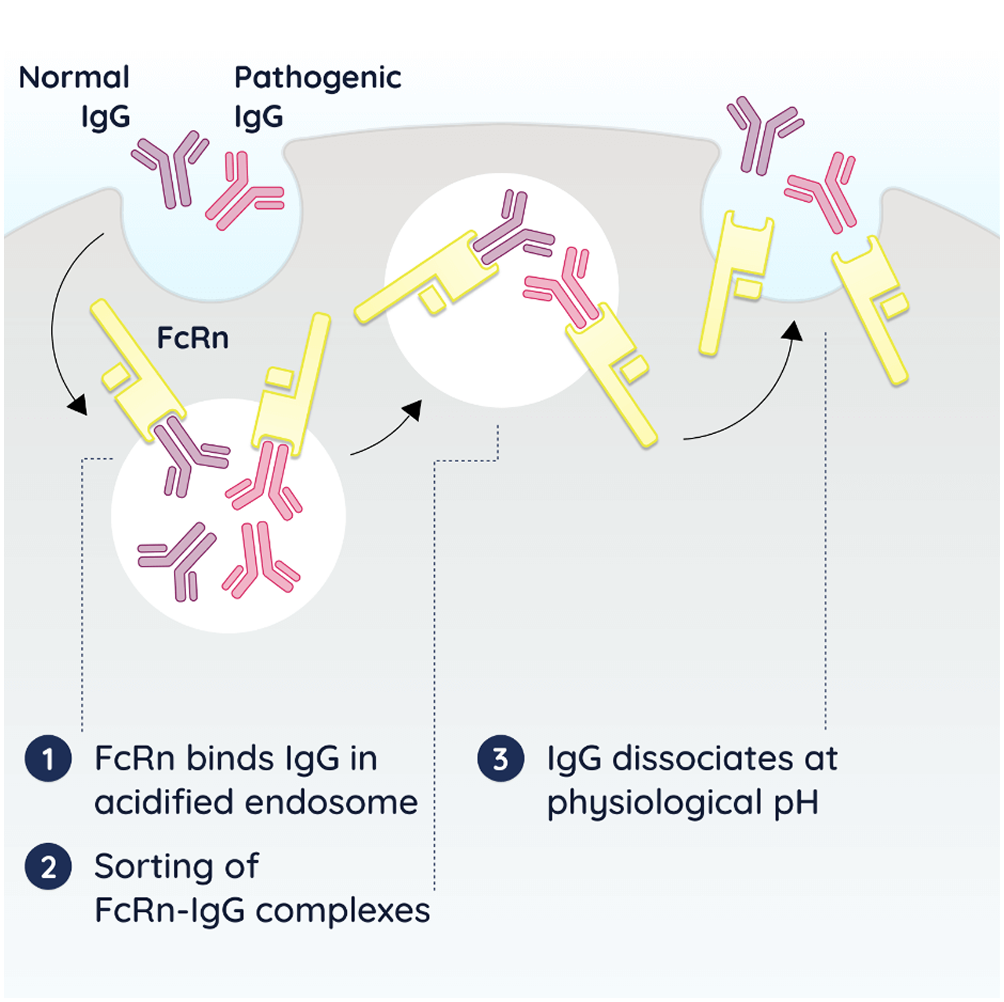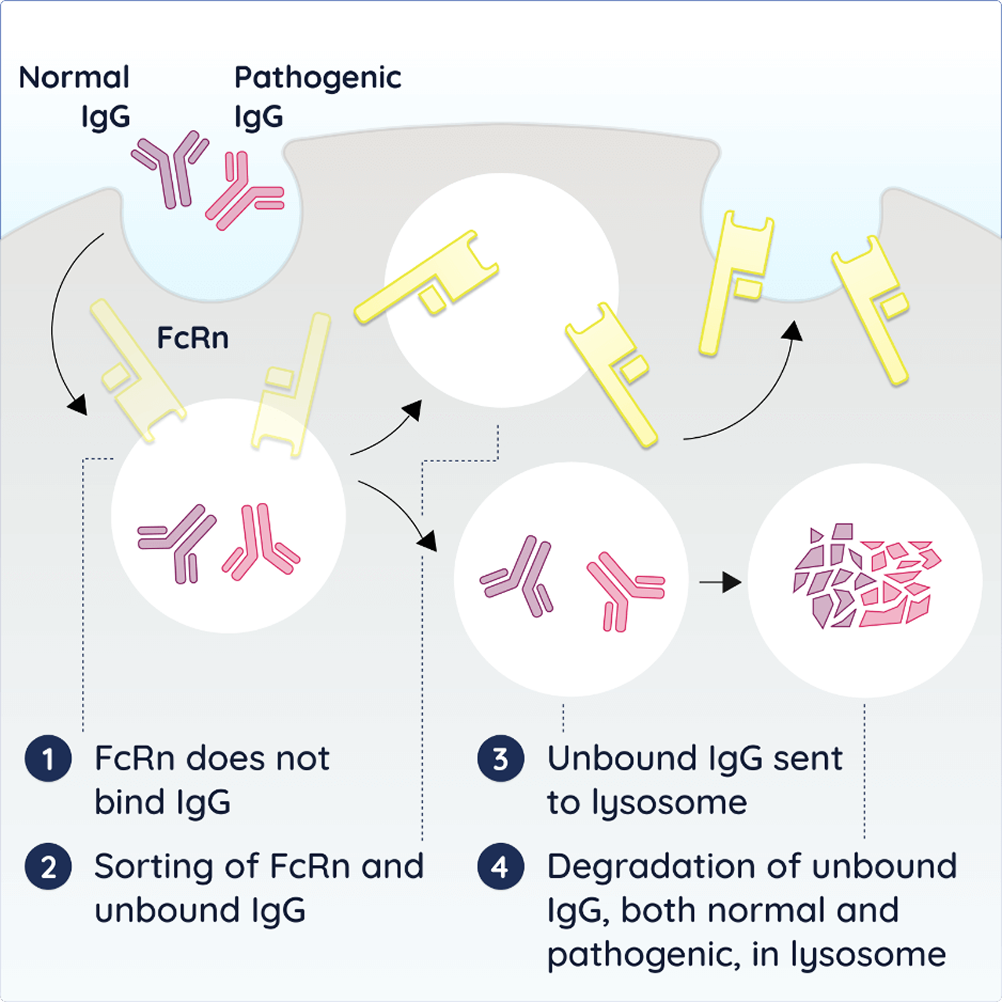gMG autoantibodies mistakenly target essential proteins on the postsynaptic membrane1
gMG subtypes vary based on the specific autoantibodies involved, influencing disease severity and response to treatment. IgG autoantibodies cause disrupted neuromuscular communications and result in muscle weakness, a primary symptom of gMG.2 Types of IgG antibodies in gMG can include:
- Anti-acetylcholine receptor (AChR)
- Anti-muscle-specific tyrosine kinase (MuSK)









